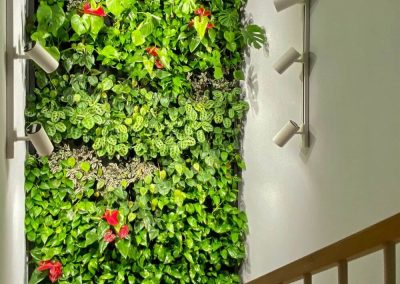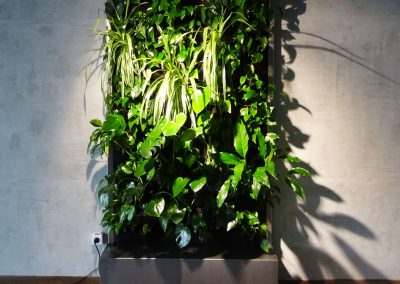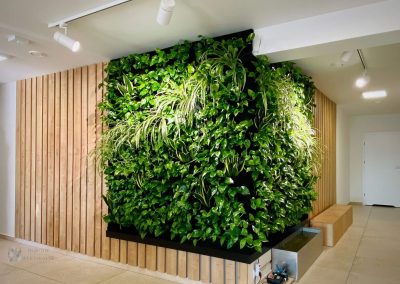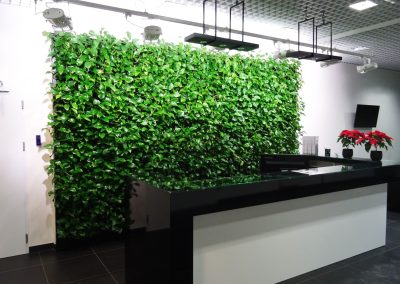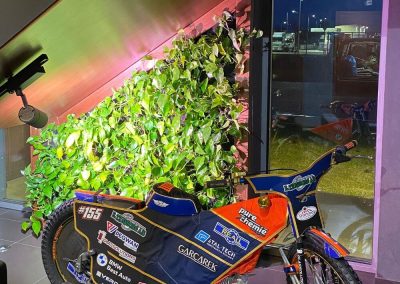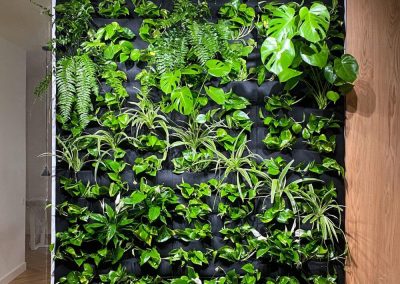Vertical garden lightning
Natural indoor light
The best light for illuminating green walls is natural light. Bright, diffused light coming through large windows is excellent for tropical species that adorn indoor gardens. Plants capture light by directing their leaves towards its source, creating an ideal exposure.
Unfortunately, in most cases, green walls need to be illuminated with artificial light. On a sunny day, the light level is about 1200-1500 µmol m-2 s-1. Imagine that in our homes on a sunny day, we have 1-5 µmol m-2 s-1. In other words, it can happen that indoor lighting is less than 1% of the PAR light compared to what we have outdoors.
For this reason, when creating green walls in such conditions, it’s necessary to consider installing additional lamps to illuminate the plants on the vertical wall. The light used for illuminating green walls should be as close as possible to natural light.
Even in very bright rooms, during the winter season, it turns out that natural light is not sufficient. In such cases, the only solution to power the plants is artificial light.
Indoor LED lighting
Without bright windows, even in the summer season, the existing lighting in the room provides only minimal light values for growing plants. It’s worth adding additional lamps. Metal halide bulbs emit a broad spectrum of light. Unfortunately, after the introduction of LED technology, they are now very rarely used.
Since the lighting used should at least partially compensate for the lack of sunlight, it is generally accepted that the minimum amount of light directed at the vertical garden should not be less than 800 lux per square meter of the vertical garden. LED lighting used for illuminating plants should contain the appropriate spectrum to support the plant’s photosynthesis process. Typically, lamps with a color temperature of 4000 K, a CRI (Color Rendering Index) of not less than 90, and a light output of around 4000 lumens are sufficient for illuminating a green wall. For example, for a garden height of up to about 300 centimeters, spaced approximately every 100 centimeters, they should adequately illuminate the installed garden. Of course, it’s best to contact a company that sells lighting to consult on the project. When making a purchase, companies are happy to help in choosing the right number of lamps and planning the optimal layout.
However, the distance between the lamps and the garden is also important. Remember that as you move the lamps further away, the light intensity decreases, but you illuminate a larger portion of the living wall. Typically, lamps are hung at a distance of about 120 to 170 cm from the green wall. The lamps can be mounted on a rail, directly on the ceiling, wall, or installed directly in the ceiling.
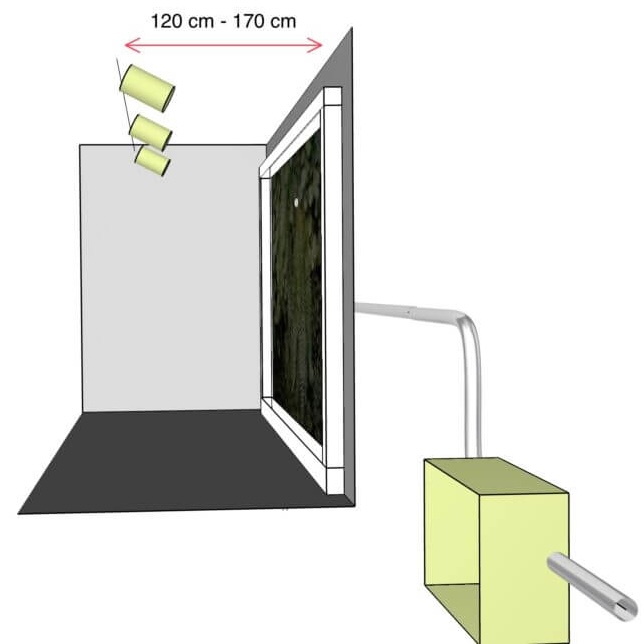
Lighting duration
The garden should be illuminated for approximately 3-18 hours a day, depending on the environmental conditions and the season. It’s essential to monitor and adjust the lighting duration. However, direct light can sometimes cause burns but will certainly be effective if limited to a few hours a day.
We recommend connecting the lighting to a timer switch. This will prevent a situation where our plants do not receive an adequate amount of light, which can significantly affect their condition.
We have provided the most important information regarding illuminating green walls. You can observe the results of our projects, including garden lighting, in our gallery of vertical gardens and on our Instagram Vertical gardens profile.

